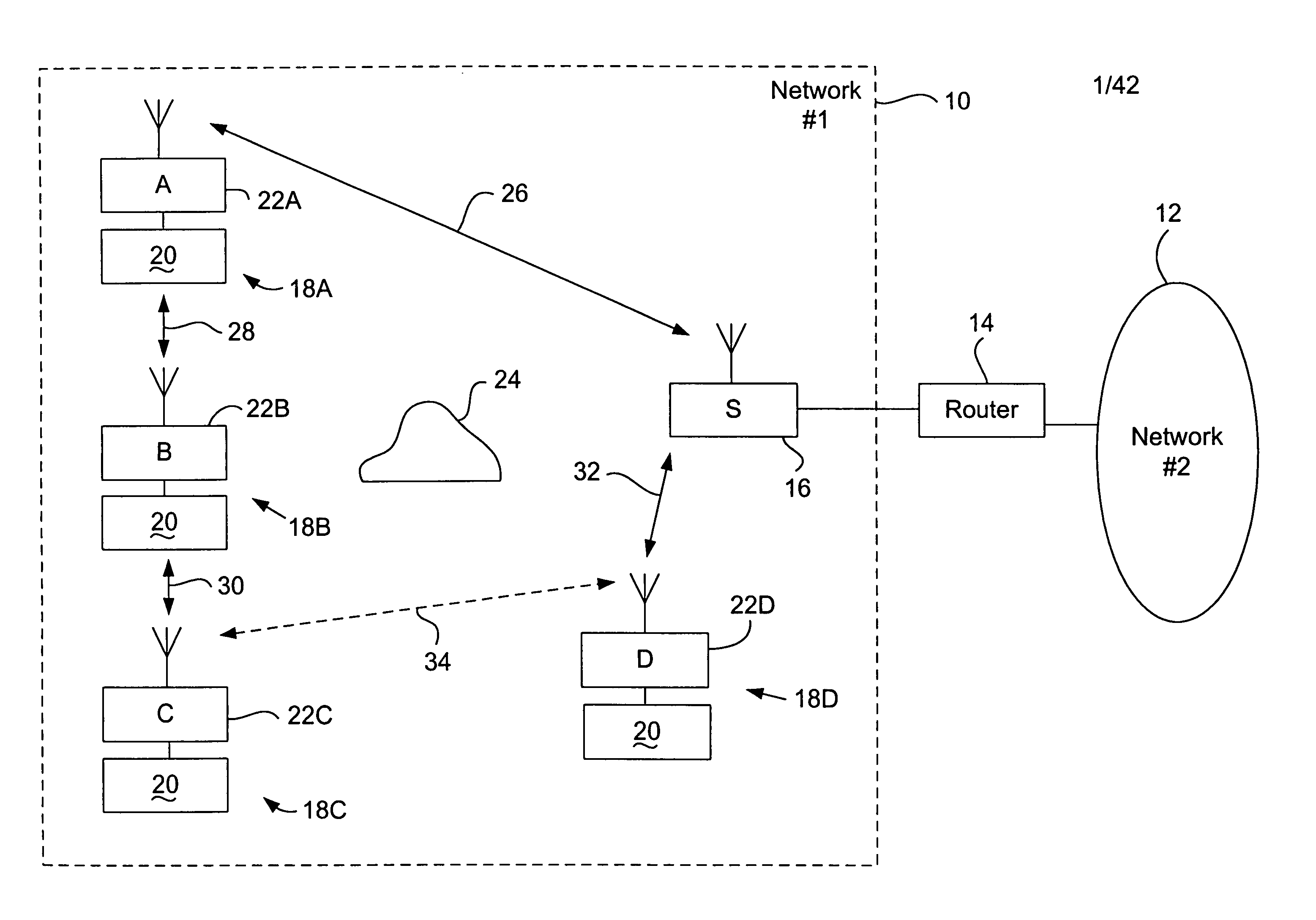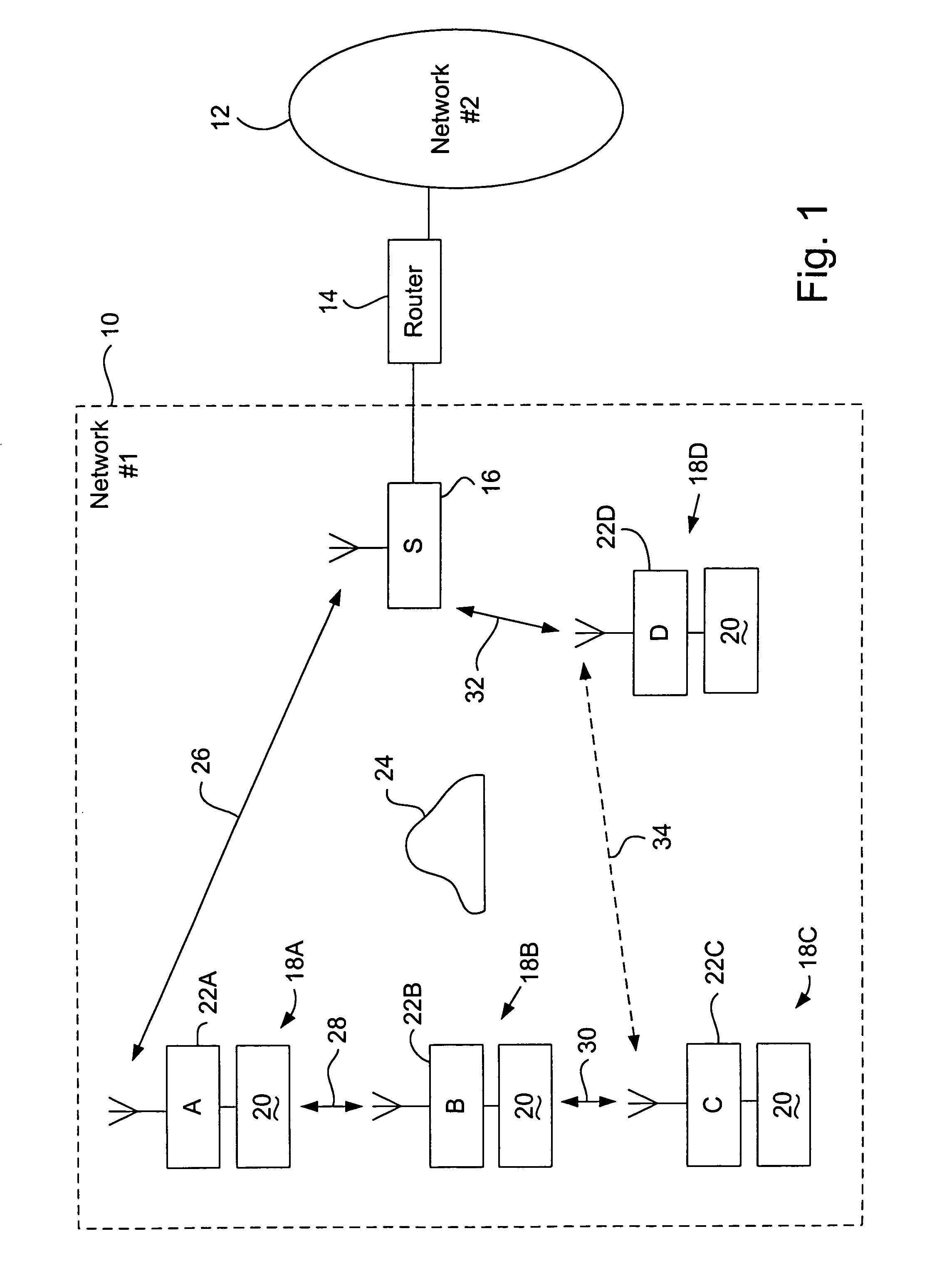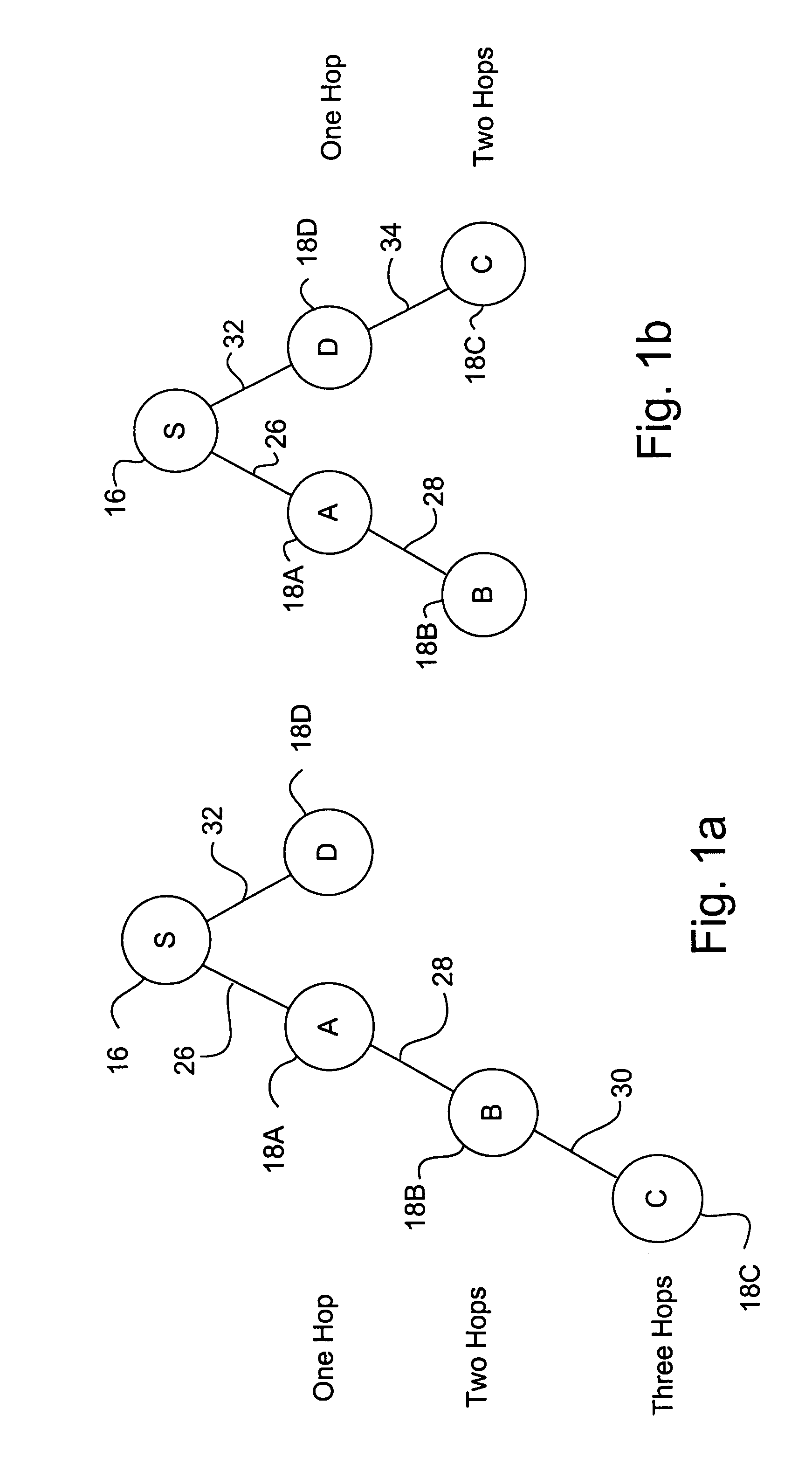Wireless network system and method for providing same
a wireless network and wireless technology, applied in the field of digital computer networks, can solve the problems of ricochet network creating a great deal of “packet duplication”, limited use, and inability to connect to the network, so as to achieve the effect of updating and improving the link, and being robust and efficien
- Summary
- Abstract
- Description
- Claims
- Application Information
AI Technical Summary
Benefits of technology
Problems solved by technology
Method used
Image
Examples
Embodiment Construction
[0064]FIG. 1 illustrates a wireless network system 10 in accordance with the present invention. The wireless network system 10, which will also be referred to herein as a “first network,” is preferably in communication with a second network 12 via a digital communication bridge or router 14. The construction and operation of networks, such as second network 12, and bridges or routers, such as router 14, are well-known to those skilled in the art. It the present invention, it is preferred that the second network operates on the aforementioned TCP / IP protocols, i.e. the second network is the Internet or is a private Intranet. At times, herein, the second network will be referred to as simply the Internet, it being understood that other forms of a second network are also operable with the systems, apparatus, and processes of the present invention. Again, the construction and operation of the Internet and Intranets are well-known to those skilled in the art. Likewise, routers, bridges, ...
PUM
 Login to View More
Login to View More Abstract
Description
Claims
Application Information
 Login to View More
Login to View More - R&D
- Intellectual Property
- Life Sciences
- Materials
- Tech Scout
- Unparalleled Data Quality
- Higher Quality Content
- 60% Fewer Hallucinations
Browse by: Latest US Patents, China's latest patents, Technical Efficacy Thesaurus, Application Domain, Technology Topic, Popular Technical Reports.
© 2025 PatSnap. All rights reserved.Legal|Privacy policy|Modern Slavery Act Transparency Statement|Sitemap|About US| Contact US: help@patsnap.com



